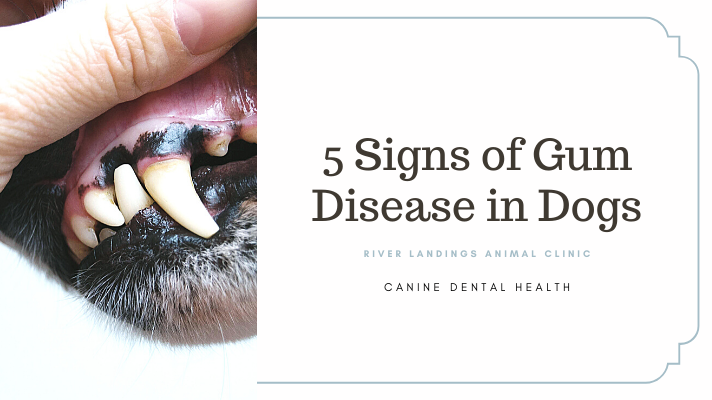Bacteria are everywhere on human and canine bodies, but when they get under your dog’s gums in the form of plaque, they can lead to gum disease— the most common dental condition that occurs in adult dogs, according to the American Veterinary Medical Association (AVMA).
Most of what many people think they know about gum disease in dogs is false. While many pet parents believe that tartar, a brown-colored coating on the teeth, causes gum disease, it actually does not— at least not by itself. Perhaps you lift up your pup's lip and look for tartar, but it is actually bacterial plaque that causes gum disease. Tartar, which is just calcified, hardened plaque, does provide more hiding places for bacteria to thrive, however.
Learn more about the most common signs of gum disease and how to prevent this condition in your dog, below.
Signs of Gum Disease in Dogs
These are the top five signs of gum disease in dogs:
Gingivitis. Symptoms of gingivitis include redness and swelling of the gums.
Bad breath. Maybe even before you notice gingivitis, pet parents may notice that their dog has bad breath. While you may think that doggy breath is normal— it's not. It’s a common misconception because so many dogs have gum disease, but it isn’t normal. The most frequent cause of bad breath in dogs is dental disease.
Receding gums. A separation of the gums away from the teeth is a sign of gum disease. In the most advanced stage of the disease, the gum tissue will recede and expose the roots of the teeth.
Bleeding. If your dog’s gums bleed when they chew, when you’re probing their mouths or brushing their teeth, it could be a sign of advancing periodontal disease.
Loose teeth. This is a sign of later stages of periodontal disease.
Diagnosis and Treatment of Gum Disease in Dogs
If a dog’s gingivitis is diagnosed and treated before it advances to full-scale periodontal disease, it is reversible.
If gingivitis continues to advance, however, it could mean serious health consequences for your dog. Most dogs, especially those under 20 pounds, develop various stages of gum disease and, depending on their genetics, this can develop in dogs as early as 18 months old.
As gingivitis advances into more serious periodontal disease, your dog will begin to lose bone and tissue surrounding the teeth and your veterinarian may be forced to extract teeth.
Other consequences may include fractures of the jaw as a result of a weakened jaw bone, bone infection, and development of a hole (or fistula) into the naval cavity, causing nasal discharge. Periodontitis can also have systemic effects on the heart, liver and kidneys, according to the AVMA.
How to Prevent Gum Disease in Dogs
The number one way to prevent gum disease in dogs is to brush your dog’s teeth daily or at minimum twice a week.
There are many other products, such as chews and water additives, that can help you maintain your dog’s gum health, but use only those with the Veterinary Oral Health Council seal of approval and to only use them to assist in maintaining oral health— not as a substitute for brushing.
The next step in maintaining your dog’s oral health is scheduling a professional dental cleaning with a veterinarian. This includes cleaning under general anesthesia with scaling and polishing.
Small dogs (under 20 pounds) should undergo a cleaning at least annually, in addition to brushing at home, while large breed dogs can generally have their teeth cleaned every two to three years.
Hear From Us Again
Don't forget to subscribe to our email newsletter for more recipes, articles, and clinic updates delivered straight to your e-mail inbox.
Related Categories:

